#heidelbergensis
Explore tagged Tumblr posts
Text
Jeroglíficos hoy Emojis. Comunicación ahora incomunicación
Jeroglíficos hoy Emojis. Comunicación ahora incomunicación #aperturaintelectual #vmrfaintelectual @victormanrf @Victor M. Reyes Ferriz @vicmanrf @victormrferriz Víctor Manuel Reyes Ferriz
06 DE AGOSTO DE 2024 Jeroglíficos hoy Emojis.Comunicación ahora incomunicación POR: VÍCTOR MANUEL REYES FERRIZ La comunicación es, probablemente, la primera actividad que gestionó el ser humano, ya sea por necesidad o por querer eliminar la ansiedad; empero, es el invento más grande de la historia según mi punto de vista ya que con ello hemos logrado avanzar al punto en que nos encontramos hoy,…
#AperturaIntelectual#vmrfaintelectual#“Pirámide de William Glasser”#Cine#Comunicación#Descifrar jeroglíficos#Dialectos#Emojis#filme llamado ”La llegada del tren” de los hermanos Lumiere#Guillermo Marconi#heidelbergensis#Homo Sapiens#Idioma Árabe#Idioma Chino#Idioma Farsi#Idioma Hebreo#Idioma Sánscrito#idioma Urdu#Imprenta#Inicio de la escritura#Jeroglíficos#Johannes Gensfleisch zur Laden zum Gutenberg#Lenguas romances#neanderthalensis#Nula capacidad de razonamiento#OCDE#Periódico#Pictogramas#Plataforma Fabricius#Prueba PISA
2 notes
·
View notes
Text
Homo Sapiensler Nasıl Hayatta Kaldı?
Homo Sapiensler Nasıl Hayatta Kaldı? Homo sapiensler olarak bu gezegende yaşayan tek insan türü değildik. Bir zamanlar gezegenimizde en az 7 başka insan türüyle daha beraberdik. Peki ama bugüne kadar nasıl sadece biz hayatta kaldık? Bilim insanlarına göre belki de en yumuşak karnımız, yani başka insanlara, sosyalleşmeye bağımlı olmak, şefkat duymak ve empati kurmak bize avantaj saglamış…
#Denisovalı#denisovalılar#Denisovan#heidelbergensis#homo#homo erectus#Homo floresiensis#Homo heidelbergensis#Homo luzonensis#Homo Naledi#homo sapiens#Homo Sapiensler#Homo Sapiensler Nasıl Hayatta Kaldı#Neandertal#Neandertaller
0 notes
Text




Some hominids-in-progress I've had on lately: a Neanderthal shifting her weight in preparation to throw a spear, some improvements I made to the meshes and textures for my A. sediba and P. boisei skins, and skins I still have to texture for H. naledi and H. heidelbergensis Digital painting (Photopea, first image), Digital sculpture (Blender, last three images), 2024
#works in progress#Hominids#Human evolution#Homo neanderthalensis#Paranthropus boisei#Australopithecus sediba#Homo naledi#Homo heidelbergensis#digital painting#Photopea#digital sculpture#Blender#2d rendering#3d rendering#facial anatomy#comparative anatomy#life restoration of fossil skulls#hominid reconstructions#postcranial reconstruction#craniofacial reconstruction#Christopher Maida Artwork
59 notes
·
View notes
Text
Compassion Fossilized

Source: https://www.theguardian.com/science/article/2024/jun/26/fossil-of-neanderthal-child-with-downs-syndrome-hints-at-early-humans-compassion
Reason and emotions don't fossilize making it difficult to know what our ancestors felt and thought about through their days. We know what they ate, where they lived, but not how they ate it or how they lived. We know they lived in small, mobile groups who traveled between shelters, following animals, but not what their social structures were or how they organized themselves.

Source: https://www.theguardian.com/technology/2010/oct/10/bright-idea-neanderthals-evolution
There are some behaviors that do leave evidence behind that point very strongly to emotion or cluster of emotions. Acts of compassion leave their mark in the fossil record, leaving little question, in general, as to why certain actions were taken.
Some of these remnants have caused us to completely rethink how our hominid ancestors behaved and their intelligence levels. While healed injuries, like a broken leg or arm, could point to a tit-for-tat type of care, survival of individuals who could not offer the same level of care they're given point to an altruistic type of compassion. There are several of the later type of remains in hominids going back to Homo heidelbergensis.

Source: https://thejns.org/pediatrics/view/journals/j-neurosurg-pediatr/24/6/article-p622.xml
In Sima de los Huesos, Spain, a five to eight year old child of H. heidelbergensis was found to have suffered from a lambdoid single suture craniosynostosis, where the lambdoid suture above the occipital bone and between the parietal bones, fused on one side before birth, restricting brain growth and development. The child, however, was cared for despite cosmetic and mental differences.

By Osama Shukir Muhammed Amin FRCP(Glasg) - Own work, CC BY-SA 4.0, https://commons.wikimedia.org/w/index.php?curid=90665722
Among Homo neanderthalensis, there are many incidents of compassion in the fossil record. In the Shanidar cave, Iraq, a man with a withered arm, deformities in both legs, and a skull injury that would have at least blinded him in the left eye lived for between 30 to 45 years and healed from the injuries and was taken care of, to the point of soft food being made for him.

Source: https://www.science.org/doi/10.1126/sciadv.adn9310
More recently, the temporal bone of a skull of a Neanderthal child that would have been at least six when they died showed signs of trisomy 21, or Down's syndrome, was studied. The inner ear showed abnormalities only found in people with Down's syndrome and would have caused 'complete deafness, severe vertigo attacks and an inability to maintain balance' for the child. That this child lived showed that there was support beyond just the mother to help care for the child as they would have needed near constant care, so the community cared for both child and mother.
These behaviors as well as deliberate burials show that early hominids cared for their most vulnerable and had a concept of kindness and compassion and an idea of continuity that we would recognize as something that makes us human.
13 notes
·
View notes
Text

Skull of Homo heidelbergensis (replica), 600,000-200,000 years ago.
Museum of Archaeology, Durham University
#skull#homo heidelbergensis#evolution#prehistory#ancient cultures#replica#skeleton#anthropology#archaeology
75 notes
·
View notes
Text


Homo bodoensis by Ettore Mazza.
#homo bodoensis#archaic homo sapiens#paleoart#paleolithic#anthropology#prehistory#ettore mazza#homo heidelbergensis#homo rhodesiensis
7 notes
·
View notes
Text

Kabwe Woman
The subject of this acrylic paintingis based on a nearly 300,000-year-old hominin skull found at the site of Broken Hill near the Zambian town of Kabwe. Paleoanthropologists have traditionally assigned this specimen to the species Homo heidelbergensis, the species believed to be the common ancestor of modern humans, Neanderthals, and Denisovans, but a paper in 2021 classified it as a late-surviving member of Homo bodoensis, the species immediately ancestral to modern humans after we split from the Neanderthal and Denisovan lineage. An old nickname for the Kabwe specimen is “Rhodesian Man” (since Zambia was under the thumb of British colonial rule as Northern Rhodesia at the time of the skull’s discovery), but what if it was a woman’s skull instead?
#homo heidelbergensis#homo bodoensis#hominin#paleoanthropology#african#black woman#woman of color#dark skin#bipoc#paleoart#traditional art#painting#art
11 notes
·
View notes
Text
Primitive hominids I'd fuck:










Credits in alt text.
#libor balák#ettore mazza#anthropology#neanderthal#homo erectus#homo bodoensis#homo heidelbergensis#homo floresiensis#homo ergaster#bogdan petry
4 notes
·
View notes
Text
Me when... Me when Benjamina 😭
"most beloved"
"What's more human than the choice to love someone ? "


(quotes from a documentary on prehistoric humans in Europe)
#Benjamina#Homo heidelbergensis#Not me almost crying over a little girl from hundreds of thousands of years ago#prehistoric
2 notes
·
View notes
Text

Cultures de l'Edat de Glaç a Europa (120.000 a 15.000 aP).
#mapa#cartografia#Edat de Glaç#Edat de Gel#cultura#Europa#Homo heidelbergensis#Homo neanderthalensis#Homo sapiens#Aurinyacià#Gravetià#Magdalenià#Primera Humanitat
2 notes
·
View notes
Photo
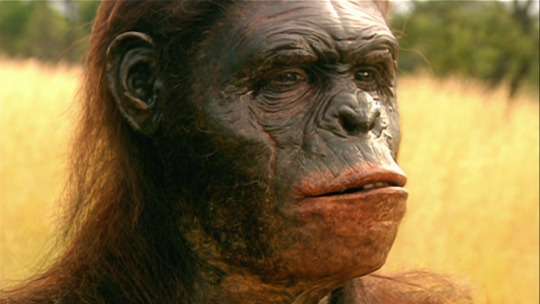



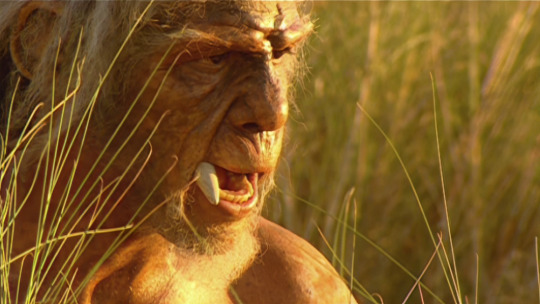

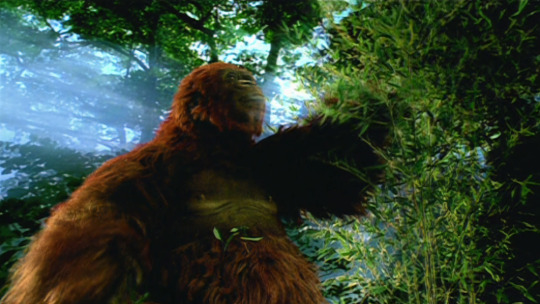

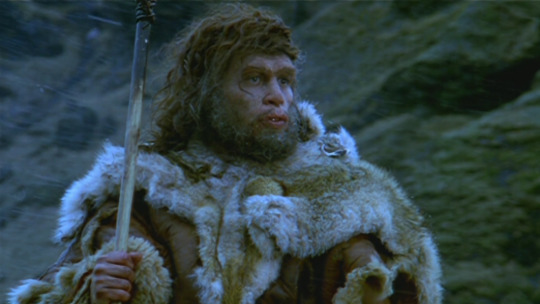
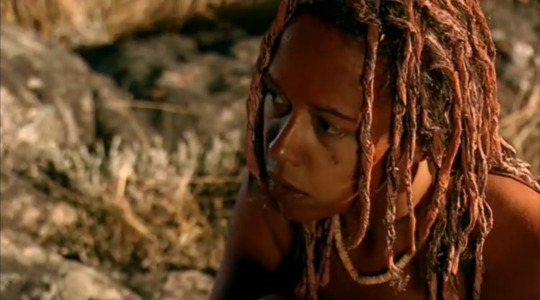
Meet your relatives: The hominids featured in Walking With Cavemen.
#walking with cavemen#walking with#human#australopithecus#paranthropus#homo rudolfensis#homo habilis#homo ergaster#homo erectus#gigantopithecus#homo heidelbergensis#neanderthal#homo sapiens#mine#the last one is lower quality because it was one of the few good forward-facing shots with modern humans in the last episode#and it's from the ending so it makes for a fitting note to end on#q
38 notes
·
View notes
Text

homo heidelbergensis is a transmasc icon. keeping it real since 600.000 BC.
#avotxt#has anybody been to the madrid regional archaeological museum in alcala de henares and taken a picture#of the life sized sculpture of homo heidelbergensis#i can only find pics of him from stock photo sites
2 notes
·
View notes
Text

Homo Antecessor: the name of this species is highly debated amongst the experts, with many considering the remains to be those of Homo heidelbergensis which has theorised origins which have been pushed back to the same timeframe as this species.
#history#historyfiles#archaeology#homo antecessor#homo heidelbergensis#homo#humans#early humans#prehistory#prehistoric#stone age#palaeolithic#species#evolution
2 notes
·
View notes
Text
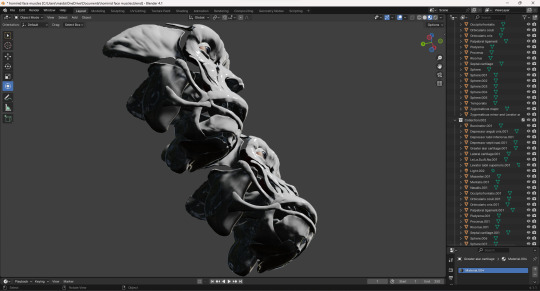


Here's some hominid soft facial anatomy : )
The model on the right of frame, representing Australopithecus sediba, has been in sporadic progress for over a year now across a few programs, and I was able to create the model on the left of frame by conforming all the A. sediba elements to the Kabwe cranium (belonging to Homo heidelbergensis *or* H. bodoensis by some classifications). That latter process took place entirely in Blender over only a couple days, so I'm pretty happy with this method. While the skulls themselves aren't visible in these screenshots, they are part of the Blender file and were downloaded directly from MorphoSource, which was pretty helpful. Digital sculpture (SculptFab, SculptGL, 3D Builder, Blender), 2023-24
#Australopithecus sediba#Kabwe cranium#Homo heidelbergensis#Homo bodoensis#Blender#hominid reconstruction#facial anatomy#anatomical model#digital sculpture#3d rendering#musculature#tendons#cartilage#eyeballs#human evolution#comparative anatomy#Christopher Maida Artwork
15 notes
·
View notes
Text
Why Africa?

By NordNordWest - Spreading homo sapiens ru.svg by Urutseg which based on Spreading homo sapiens.jpg by Altaileopard, Public Domain, https://commons.wikimedia.org/w/index.php?curid=34697001
Current evidence points to Homo sapiens developing in Africa about 300,000 years ago, but Homo Heidelbergensis who gave rise to us also lived in Eurasia, where they gave rise to the Neanderthals, and in Asia, where they gave rise to the Denisovans. Homo erectus, who gave rise to H. heidelbergensis, lived only in Africa, so H. heidelbergensis explored widely. But, why was it in Africa that H. sapiens developed?

By Maulucioni - Own work, CC BY 3.0, https://commons.wikimedia.org/w/index.php?curid=15209226
It was established in about 1987 that mitochondrial DNA, which humans inherit from the egg cell they developed from, can be traced to on population in Africa that lived 200,000 to 150,000 years ago. Since the egg cell is typically from the mother, thus the whimsical nickname 'Mitochondrial Eve' was given to the unknown woman who gave rise to he mitochondrial DNA that modern humans have.

By Emőke Dénes - kindly granted by the author, CC BY-SA 4.0, https://commons.wikimedia.org/w/index.php?curid=78678876
Newer studies, such as one published in 2023, are seeking to understand whether a single population of H. heidelbergensis gave rise to H. sapiens or if it was an intermingling of two or more population groups that gave rise to H. sapiens, such as groups that would come together occasionally for the exchange of members. These various populations would develop differently based on the environment of their typical range leading to minute differences between populations groups and the intermingling of these minor differences giving rise to a new species.

By Tomruen - Data from ncdc.noaa.gov, and this looks best: Composite CO2 record (0-800 kyr BP), marked up with 230 ppm transition between glacial and interglacial periods., CC BY-SA 3.0, https://commons.wikimedia.org/w/index.php?curid=16147504
The current hypothesis as to why Neanderthals and Denisovans did not give rise to other hominids is that the glacial period of 100,000 years limited their range and thus their genetic diversity. The relatively mild climate of Africa during the glacial maximums allowed for genetic diversity as well as exchange of members between groups, keeping genetic flow moving between groups.

By Juan C. Larrasoaña, Andrew P. Roberts, Eelco J. Rohling - Dynamics of Green Sahara Periods and Their Role in Hominin Evolution, CC BY 4.0, https://commons.wikimedia.org/w/index.php?curid=85313285
Even now, Sub-Saharan Africa has higher genetic diversity than the rest of the world combined. Curtis Marean, professor of paleoanthropology and associate director of the Institute of Human Origins at Arizona State University, said "The more genetic variation you have, the higher probability you have of something interesting evolving."
#human history#human development#homo heidelbergensis#homo neanderthalensis#homo denisova#homo sapiens#african history#mitochondrial eve#genetics
2 notes
·
View notes
Text
I may be a jack of all trivia trades and that's allegedly better than a master of one focus but it's a bitch and a half when trying to select a maximum of two books right now when there is so much shit that piques your interest and you don't know what you want to devote your time and means on to learn more about
#every bit of knowledge locked away in my brain sounds impressive but is functionally useless to helping me to survive in this world#unless I want to buy my way in life by constantly winning pub quizzes or something#i haven't even been to a pub since I was ten (Ohio lets kids in pubs as long as food is served)#I was a pretentious trivia nerd even then lol and it failed to get me anywhere in life except people think I'm smarter than I actually am#in any one subject#them: ah you like Shanidar Cave how do you feel about the recent heidelbergensis debates? me: 😳#jack of all trades#trivia
2 notes
·
View notes